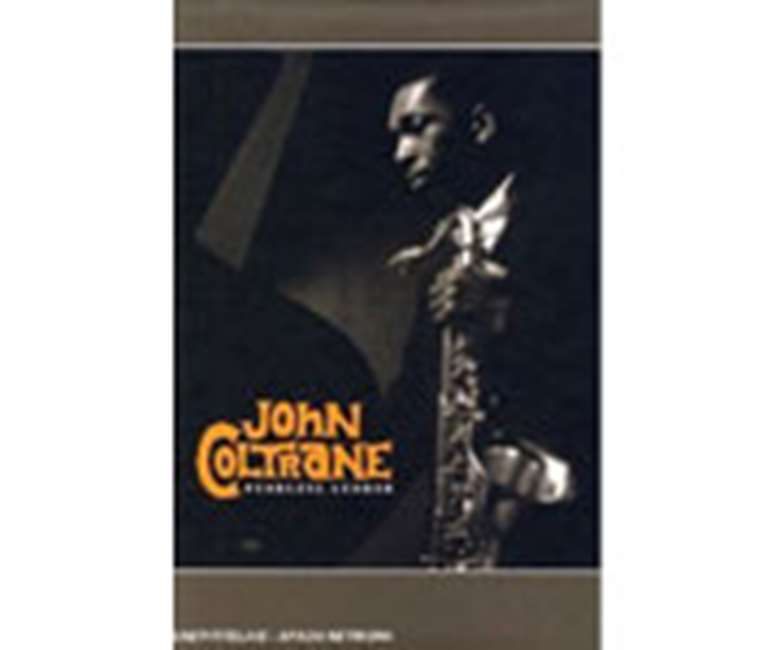John Coltrane - Fearless Leader
Wednesday, January 3, 2007
Prestige/Universal PRCD6-30059-2 (6CDs) | ****John Coltrane (ts), Johnny Splawn, Donald Byrd, Wilbur Harden, Freddie Hubbard (t), Sahib Shihab (bar s), Mal Waldron, Red Garland (p), Paul Chambers, Earl May (b), Al Heath, Art Taylor, Louis Hayes and Jimmy Cobb (d). Rec. 1957-58

Considering Coltrane recorded over 20 CDs worth of music for Prestige between late 1955 and the end of 1958, committing his message to tape with scores of musicians of varying quality and quantity hired by Bob Weinstock, from the Miles Davis Quintet to leaderless (and occasionally formless) blowing sessions where whole LP sides were swallowed by one tune, it may be seen as a positive indication of restraint on Coltrane’s part that, given the responsibilities and opportunities of a leader by Weinstock, he filled just six of those 20 odd discs and used a comparatively restricted pool of musicians as his accompanists, as can be seen above.
From that reservoir of six CDs’ worth came a series of albums released between 1957 and 1965, the first few issued while Coltrane was with the label and, presumably, with his active involvement, the later ones cannily held back by Weinstock as his once callow star achieved international jazz ascendancy. To put them in chronological order of release, there was Coltrane (1957), Traneing In (1958), Soultrane (1958), Lush Life (1960), Settin’ The Pace (1961), Standard Coltrane (1962), Stardust (1963), The Believer (1964), Black Pearls (1964) and Bahia (1965) with, logically, The Last Trane (1965) bringing up the rear. Of these albums, the first three came from single sessions, as did Black Pearls, while the rest were assembled from a variety of 1957 and 1958 recording dates. Material for the justly celebrated Lush Life, for example, came from no less than three separate sessions, yet the album held together beautifully, being skilfully sequenced by Weinstock and his team two years after Coltrane had left Prestige.
So, fearless leader? Well, perhaps single minded and resourceful would have been more apt epithets, although they’re hardly the sort to hang a boxed set reissue on. Significantly, Coltrane made no records as a leader while still addicted to heroin – his first was made just weeks after his successful cold turkey. With that awful burden off his shoulders, he could apply himself with complete conviction to the business of creating the type of music he could believe in, played alongside musicians he had complete faith in. The first, Coltrane, was clearly designed to showcase his versatility as well as his power, it featuring him in no less than three different instrumental ensembles.
Traneing In, by contrast, sticks to the sax-plus-rhythm section format that would largely dominate his Prestige sessions and reach right into his Atlantic and Impulse! recording regimens. Each album showcases Coltrane’s then-current musical concerns and ideas to the optimum degree and it is notable that there is little falling-off in quality, right up to The Last Trane. When he led a session, he took no prisoners. So much for the single minded bit. Resourceful? Well, there was at least one part of his Prestige contract he was less than delighted with. Weinstock, like many small label owners, made sure he signed up his talent’s publishing, thus guaranteeing another revenue stream.
Of all the material Coltrane recorded as a leader for Prestige, the only compositions credited to him are blues made up on the spot, many of them titled after he’d left the label. Pointedly, his Atlantic recordings are packed full of Coltrane compositions, published by his own company. He’d spotted the pitfalls of the Prestige situation and avoided them through judicious redeploying of other people’s material.
So what do these sessions as a leader for Prestige add up to? Divorced as they are here from the more workmanlike appearances for other leaders and ensembles (the Miles Davis sessions being the obvious exception), and from the historical anomaly of being initially released over such a long period of time, they reveal a clear and consistent graph of personal achievement for Coltrane as well as plotting logical musical stepping stones to the Atlantic and Impulse! years.
The occasional presence of a trumpeter aside, Coltrane concentrates on the quartet format that yielded him so much musical gold during his career and while it may be true that he avoided using his own compositions for Weinstock (they show up freely on the one date he did for Alfred Lion, in 1957), his conception clearly shapes the way every tune was approached by a given group on all of these sessions. Those of you who are long-term Coltrane watchers will no doubt have their favourites here (Traneing In, Soultrane, Lush Life maybe), but there is so much to enjoy, even on the rather frantic and loose-sketched late 1958 dates, that other performances are sure to recommend themselves – the Settin’ The Pace session, for example, with its superb balance of caressing ballads (once more from Sinatra’s book) and rugged excursions into modernity (‘Little Melonae’).
So – an intelligent and nicely-packaged new approach to this familiar material by Prestige’s latest owners, Universal, and one that helps the listener bring a new and perhaps sharper focus to their own appreciation of this giant’s protean talents, although the accompanying essays are rather low-wattage, as if the normally excellent writer Lewis Porter has been asked to spell out the bleedin’ obvious. Small price to pay. Roll on the next two boxes in this series.
Keith Shadwick